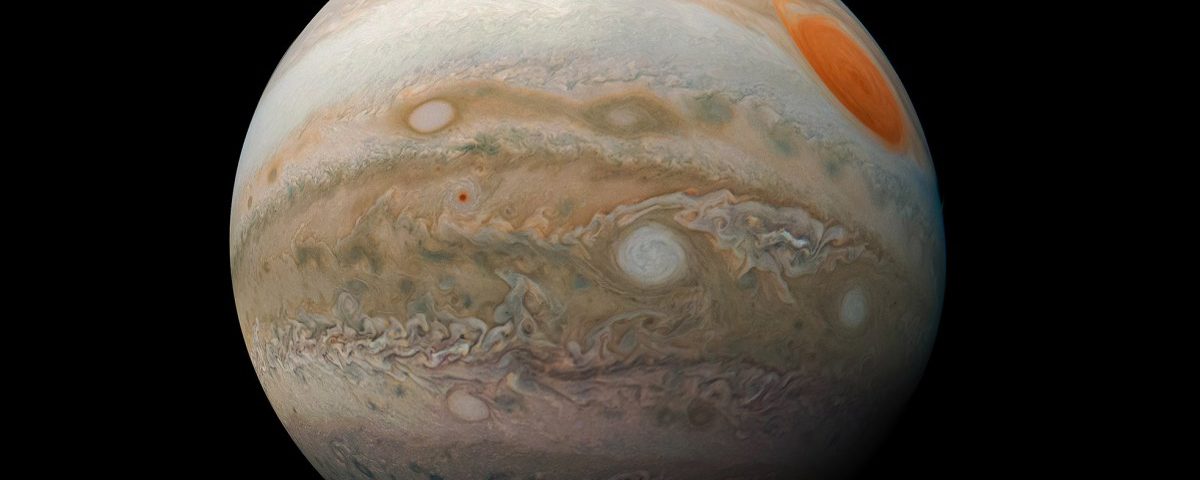Jupiter will be at its biggest and brightest this weekend. Here’s how to see it
Jupiter will be at its biggest and brightest this weekend. Here’s how to see it
There’s a special chance to see Jupiter in the sky this weekend as it comes closest to Earth.
Full Article
This weekend will bring a striking event for sky watchers, as Jupiter is will be at its biggest and brightest. This is a great opportunity to look up and see one of the brightest objects in the sky. This is occurring because Jupiter will be in opposition on Saturday, December 7, which means that it is directly opposite from the sun as seen from Earth. This happens every 13 months. In addition, Jupiter is at its closest to Earth just one day earlier, on Friday, December 6. This happens because, although Earth and Jupiter both have orbits around the sun that are almost circular, they are not perfectly circular. Both orbits are slightly oval shaped, called elliptical, and in 2022, Jupiter came its closest to Earth in 70 years. This is still affecting the relative closeness of Jupiter and how big it is in the sky. Jupiter will appear to rise in the east of the sky just as the sun is setting, and will be visible roughly directly overhead at around midnight. It is possible to view Jupiter with the naked eye, but if you have access to binoculars or a telescope, then this is a great opportunity to make use of them. With these aids, you may even be able to see some of Jupiter’s larger moons as well. One key tip for observing objects like Jupiter is to ensure that your equipment is very stable, as even small wobbles will disrupt your view. With a telescope, use a stable mount, and if you don’t have a mount for your binoculars, then try resting your elbows on a solid surface to keep as still as possible. If you’re interested in trying out some astrophotography, then this is also a great chance to image Jupiter. It’s a special object to photograph because of its large size and striking color, but it does have challenges due to its atmosphere. “When you observe Jupiter through a telescope, you’ll see the shimmers and distortions caused by the atmosphere,” Sky at Night magazine explains. “This makes fine detail difficult to discern.” Sky at Night recommends using a technique called afocal imaging for getting a snapshot of the planet, but for a more accurate image, you’ll want to use the stacking method in which you take multiple images in quick succession, then add these together to create a more detailed image. This weekend will see the peak of one of the most spectacular meteor showers of the year: the Perseids. The shower occurs around this time each year as Earth passes through a cloud of debris left in its orbit by a comet called Swift-Tuttle. The comet orbits the sun just once every 133 years, but over its time it has left a “river of rubble” across Earth’s orbit. When the planet passes through this river, the tiny pieces of debris burn up in the atmosphere and create a stunning lightshow in the sky. The Perseids are generally one of the best meteor showers for sky-watchers, but this year the timing is particularly good due to the phase of the moon. As the moon is a source of bright light in the sky, when it is full it can create glare that makes meteors harder to see. This weekend the moon is only in its first quarter, and will affect viewing before midnight. “But as the Moon sets before midnight local time, the rest of the night is primed for perfect viewing circumstances,” said Diana Hannikainen, observing editor at Sky & Telescope. SpaceX has established itself as a champion of reusable commercial rockets, with the enormous success of its Falcon 9 rocket making the company the benchmark against which other commercial launch operations are judged. The Falcon 9, which carries satellites for commercial entities and space agencies into low-Earth orbit, had a long string of flawless launches. But its most recent launch failed to deploy its payloads correctly, breaking that streak and serving as a reminder that even with well-trusted technology, space operations are still a challenge. The launch was scheduled for yesterday, July 11, from Space Launch Complex 4E at Vandenberg Space Force Base in California. The Falcon 9 rocket was carrying 20 Starlink satellites to be added to SpaceX’s communications network. The booster separated from the rocket as planned and landed on SpaceX’s droneship for reuse, but a problem occurred with the rocket’s upper stage due to a leak of liquid oxygen. The Falcon Heavy rocket on the launchpad at the Kennedy Space Center in Florida ahead of its ninth flight in December last year. SpaceX SpaceX is about to send its powerful Falcon Heavy rocket skyward in its first mission since December last year. Upgrade your lifestyleDigital Trends helps readers keep tabs on the fast-paced world of tech with all the latest news, fun product reviews, insightful editorials, and one-of-a-kind sneak peeks.



